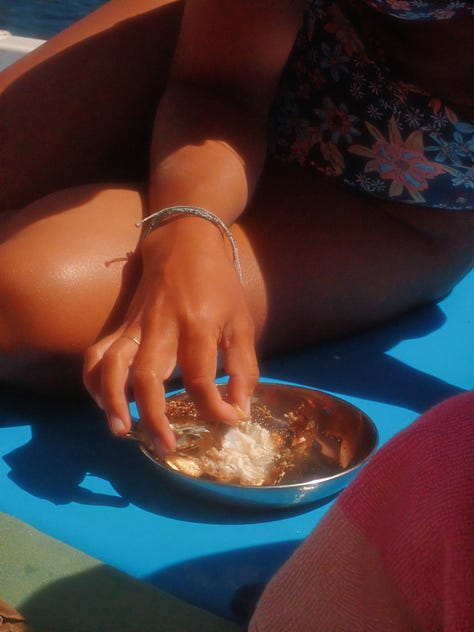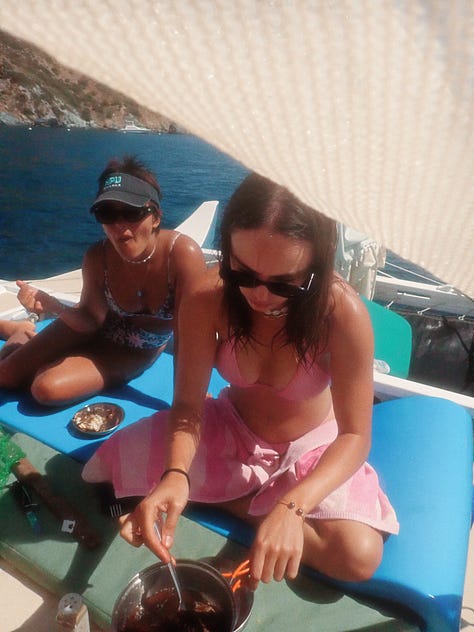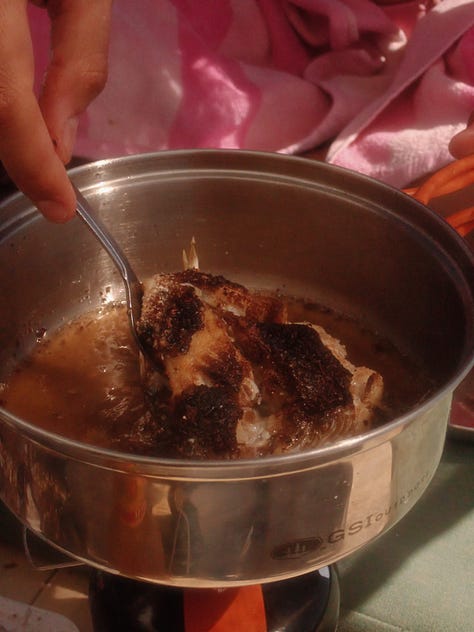Aloha mai,
Keili here! Happy Turkey Day! Hope you do not mind too much that I am a day late, had to stuff my face with the family for the whole day :)
I am so blessed for these experiences, and beyond thankful to you for reading our stories about ʻAʻA. We really appreciate your likes, subscriptions, sharing, and inspiring us to continue on!
My favorite thing about having a voyaging canoe is sharing that experience of flying across the water, actively interacting with the natural world. Feeling the pull and tug of the tiller when you position the canoe just in the right position with the wind… itʻs pretty exhilarating! Along with all the good, there is also a bit of danger. It adds to the fun! Or for me it does… Someones first time on any sail boat can be intimidating, Chris and I have adapted some tips, tricks, and rules of thumb that have helped our friends and family make adjustments to seafaring quickly and easily as can.
First thing when it comes to anything about sailing and being a good sailor is observation. Many of our crew members will usually relax after we tell them this simple truth: “Nothing should feel rushed”. And we mean it. Absolutely no circumstance should create or require panic, immediacy, or high stress. If it does things are bound to get even worse. Having a boat filled with chaos will usually create more chaos (isn’t that like the third law of thermodynamics or something?) lol.
Absolutely the best way to avoid creating any situation that potentially could lead to high stress and or time urgency is to observe. Observe your surroundings, observe the natural world around you, take mental and verbal notes on anything and everything that could cause hinderance - at all times!! Constantly looking around us, telling one another of any sketchy looking boats headed our way, any depth/distance concerns or really just over communicating everything kept us out of trouble A LOT. And, it was only when we were not religiously following these practices that we would fall short, hit docks, frustrate on another, or hurt our boat :,(.
Some common questions we get from people who first come aboard, meet, or even hear about ʻAʻA:
The #1 Question we get: Provisions. What to we drink? Eat? How do we fit it all? How do we cook and ration meals?
Well, luckily Chris has had his fair share of long voyages (some over 20 days long) so I follow his lead in this department. Always planning for the worst but hoping for the best has been our mantra. Since we can EAT, we usually do (at least) 1 Costco run for bulk essentials like dried fruit, oats, rice, nuts, produce, bread, and meals we know we could eat for a while if we had to (like chili, Annieʻs lentil soup, and Mac n cheese). Then, for good measure we will do a trip to your “run-of the mill” grocery store to get items that we don't exactly need in “Costco size”. Here we will get more specific and special items like steak, seasonings, juice, and short-life greens. Finally we will end the madness with a run to a super fancy expensive health food store to get our favorite healthy snacks, bars, oils and ice cream for the road. Usually health foods also have the best drinking water so we will fill our drinking containers then as well.



Which brings me to water! Wai! Wealth! Water is sooo important. Honestly I am not too sure the exact water to ratio but we have lasted over a month on 3 five gallon tanks, 3 one and a half gallon tanks and then one extra of each with hose water and a solar shower full of hose water. Usually docks and stops along the way will have drinking water and hose water that we can use to fill up. For storage we use reusable plastic tanks because they are light, can deflate after use to save space, and they are cheap. In the future we have plans to include a water catchment system as well as buy a de-salinization machine which would allow us to use sea water.
All of our precious food and water is stored in the hull we don’t use for sleeping. With plenty of storage in the ends of each hull we can tuck most away and put the fresh produce and our favorite snacks/dishes in our “kitchen” to eat ASAP. When I say kitchen… I mean our two shelves and one net that holds our utensils, foods, electrolytes, and our coveted Jet Boil. Small, light, and energy efficient I highly recommend a Jet Boil to any friends who enjoy eating fast and warm food in the most remote places (sponsor us).
Because we do make sure to have quite a bit of food on board (usually family will send us off with baked goods and food too), we have not had to ration a whole lot. Some days we will be quite busy so eating is not a given, whereas other days we may be coasting, set the sails, and snack all day. Of course for longer voyages we will create a more structured meal plan and be sure to have enough food to not only fill our bellies, but keep us alert, energized, fit, and healthy.
Well, I was going to share some more about what we are learning and have experienced so far but… I do want to keep these newsletters short so you can read them easy peasy in the rush of your day-to-day. Let me know if you want some more common questions asked answered or if you have any specific questions we could dive into!
Mahalo to all who carry love with them everywhere they go, and who take any opportunity to share, unite, learn and fly with others! Special thanks to everyone who has supported ʻAʻA, my family, friends, and my mother Illa McEvilly. Thank you for always reminding me of what is important.







Great post Keili! Love you 💗